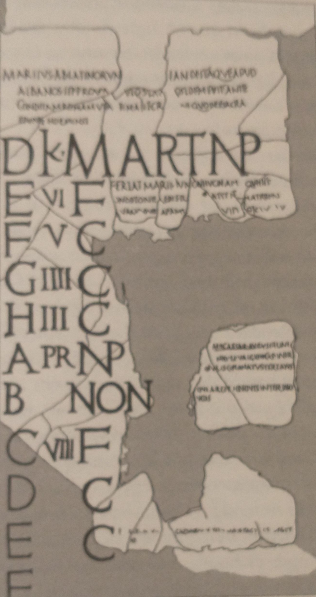
SOOTHSAYER: Caesar!
CAESAR: Ha! Who calls?
CASCA: Bid every noise be still; peace yet again!
CAESAR: Who is it in the press that calls on me?
I hear a tongue shriller than all the music
Cry ‘ Caesar!’ Speak. Caesar is turned to hear.
SOOTHSAYER: Beware the ides of March.
CAESAR: What man is that?
BRUTUS: A soothsayer bids you beware the ides of March.
CAESAR: Set him before me; let me see his face.
CASSIUS: Fellow, come from the throng; look upon Caesar.
CAESAR: What sayst thou to me now? Speak once again.
SOOTHSAYER: Beware the ides of March.
CAESAR: He is a dreamer. Let us leave him. Pass.
Julius Caesar by William Shakespeare
This year there are many vital elections around the world; often involving populists like Julius Caesar. I rank Caesar with Napoleon as one of the Dictators who was, personally, an intelligent, reasonable man, who, in some ways, ruled ‘wisely’ but who was nonetheless willing to sacrifice millions of people for his personal ambition. Today, the world is faced with the more run-of-the-mill populists who are geniuses only in their own, often, deranged minds. I know, we as humans, might think, if only X would drop dead, how much better it would be? Brutus, being an honourable man, took action upon his thought. But, as often is the case, what seemed the ‘right thing’ to do, turned out to be a disaster for the Roman Republic which the plotters were trying to save. So, perhaps, still those assassinary thoughts, read this article in ‘History Today’ about the impact of Julius Caesar’s murder and do everything you can do to use democratic means to defeat egotists to whom truth means nothing.
Now, what the heck are or indeed is the Ides of March?
A Roman month was divided into three, first the Kalends, then the Nones and finally the Ides. These three days were the important days of the year. The Kalends is the 1st of the Month, the Nones the 7th of the Month and the Ides the Fifteenth of the Month. It is said to go back to the early days of Rome and a lunar calendar, The Kalends being the first tiny sliver of a crescent moon a couple of days after the New Moon; the Nones the first quarter of the Moon and the Ides was the full moon. But of course, it doesn’t really make that much sense as the full moon is 28 days after the new Moon not 15, and the three divisions, divide up the first half of the month, and leave the second half undivided.
How did you use it? When talking about a day in the future month you might say I’ll meet you on the 5th day before the Kalends. Debts were supposed to be paid on the Kalends and that is where we get our word calendar from. These public calendars were called Fasti, and this is the name of Ovid’s great Almanac Poem, the Fasti, which I often quote from.

I’ve never really understood this system, despite a few attempts, until I saw this drawing of a Roman Calendar. The first column, on the left, with the letters from D downwards represent the letters A – H which is a recurring cycle of 8 market days, running in tandem with Kalends, Nones etc. The second column begins with the Letter K for Kalends, (reading across then MART for March, then NP which means the Kalends is a day for public festivals). Back to the second column, below the K for Kalends, the days are counted down to the upcoming Nones, so the next one after Kalends is VI, meaning the 6th day before the March Nones. Then V, IIII, III, and PR means the day before Nones. Below and to the right of the PR are the letters NON which is, as you might hope, short for Nones.
In the second column below this is the number VIII which means the next day is the 8th day before the Ides of March. The fragment of stone from which this drawing comes does not continue down to the Ides, unfortunately.
Complicated, huh? It gets worse. The third column has a series of letters in it: F C C C NP NON F C C. We already know that the NON is short for Nones, The F means it’s a fastus, a permissible day when legal action can be taken. The C means C comitialis which on fasti days the Roman people could hold assemblies. We have already seen that NP marks days for public festivals. An N would mean days when political and judicial actions were prohibited, although there is not one here. The small unreadable text to the right is information, I believe, about holidays and historic events to be marked in the calendar. This is, in fact, a Roman Stone Almanac.
This confusing system survived Caesar’s major calendrical reforms when he transformed the Roman system, which was rotten at the core, to align it with an almost accurate calculation of the time the Sun takes to circle the earth (or the other way around!) to create the almost correct Julian Calendar.
But the Kalends, Nones, and Ides did not survive because, in the Imperial period, this strange division of time was replaced by the familiar 4 fold division of the month into our 7 days of a week. So, for the first time, you could work 24/7.
I will deal with Julius Caesar’s reforms in great depth on another occasion.
Discover more from And Did Those Feet
Subscribe to get the latest posts sent to your email.

I am absolutely befuddled but delighted. Thank you for this information.
I’m so sorry to befuddle you! But you can see I’m quite often trying to unbefuddle myself in my process of writing!
I have wondered about our 7 days of the week, and what predated it. Thanks, Kevin, for the interesting post about the Roman calendar, fascinating!
It seems so baked in, our 7 day week, that it is hard to imagine any other arrangement. But there were quite a few around the world – Egypt for example which used a 10 day week.